Good hiking trails near me: embarking on an exciting outdoor adventure is just a short drive away. Discover the perfect trails, from easy strolls to challenging climbs, tailored to your fitness level and interests. Whether you seek scenic views, wildlife encounters, or historical landmarks, this guide provides the insights and tools you need to find your next hiking destination.
This comprehensive resource explores a variety of trails near you, offering detailed information on their difficulty, distance, elevation gain, terrain, estimated time, and amenities. We’ll also delve into user reviews, safety tips, mapping resources, and responsible hiking practices to ensure a safe and enjoyable experience. Get ready to explore the great outdoors!
Identifying Local Hiking Trails
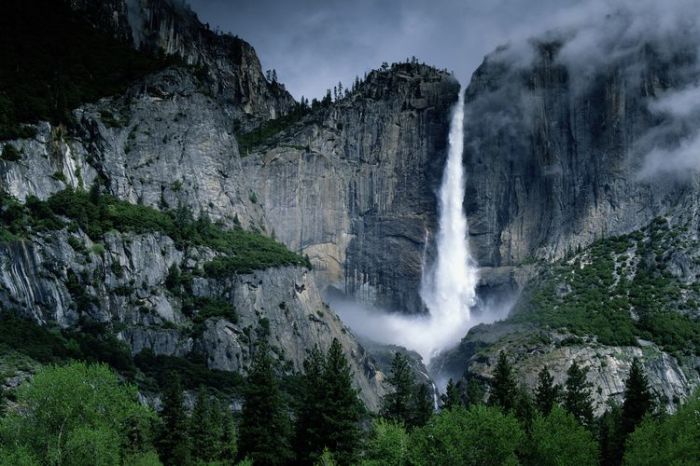
Source: tripsavvy.com
Exploring the natural beauty surrounding your community is a rewarding experience. This section provides details on nearby hiking trails, catering to different fitness levels and interests. Knowing the terrain, difficulty, and estimated time commitment empowers informed choices for your next outdoor adventure.
Local Hiking Trail Profiles
These trails represent a range of challenges and scenic rewards. Careful consideration of distance, elevation gain, and terrain type is essential for planning a safe and enjoyable hike.
| Trail Name | Difficulty | Distance (miles) | Elevation Gain (feet) | Estimated Time (hours) | Notable Features |
|---|---|---|---|---|---|
| Riverside Forest Loop | Easy | 2.5 | 150 | 2 | Gentle incline, shaded forest path, ideal for families and beginners; offers opportunities for birdwatching. |
| Mountview Ascent | Moderate | 5.0 | 800 | 4 | Steeper incline with panoramic views from the summit; well-maintained trail, with potential for wildlife sightings. |
| Canyon Creek Trail | Challenging | 7.5 | 1200 | 6 | Requires significant elevation gain; offers challenging terrain and breathtaking canyon vistas; expect rugged surfaces. |
| Coastal Cliff Walk | Moderate | 4.0 | 500 | 3 | Coastal views, rocky terrain; a moderate hike with stunning ocean vistas; be prepared for potential wind and uneven surfaces. |
| Hidden Valley Nature Path | Easy | 1.5 | 100 | 1.5 | Short loop trail, ideal for a quick escape; offers glimpses of diverse plant life and a serene atmosphere. |
Trail Amenities and Accessibility
Understanding the amenities and accessibility of hiking trails is crucial for planning a safe and enjoyable experience. Different trails cater to various needs and preferences, from families with young children to experienced mountaineers. This section delves into the key factors to consider when choosing a trail, focusing on the features available at trailheads and the overall accessibility for different groups.Trail amenities significantly impact the overall hiking experience.
Features like restrooms, parking, and water sources are critical for both comfort and safety, particularly on longer or more challenging routes. Accessibility considerations for hikers with mobility limitations are equally important, ensuring that everyone can enjoy the outdoors. This section provides a detailed look at the amenities and accessibility of different hiking trails in the area, aiding in the selection of the most suitable route for individual needs and preferences.
Trailhead Amenities
Trailheads often serve as a hub for hikers, providing essential services and information. Essential amenities include restrooms, parking, and water fountains. The availability and condition of these amenities directly influence the overall experience and safety of hikers. The presence of these services, particularly in remote areas, can be a significant factor when choosing a trail.
- Restrooms: The presence or absence of restrooms is a critical consideration, especially for longer hikes. Their cleanliness and maintenance directly affect the experience for all hikers.
- Parking: Adequate parking space is essential to prevent congestion and ensure that hikers can easily access the trailhead. Limited or unavailable parking can lead to frustration and potentially unsafe situations.
- Water Fountains: Access to water fountains is critical for hydration, particularly on hot days. Their availability and the quality of the water dispensed are important factors for planning a hike.
Trail Accessibility
Accessibility for individuals with mobility limitations is a crucial aspect of trail selection. The terrain, trail surface, and overall design influence accessibility. Consideration of these factors ensures a more inclusive hiking experience for all. Well-maintained, relatively flat trails are generally more accessible.
Finding good hiking trails near you is a rewarding experience, often leading to stunning scenery. Expanding your exploration beyond hiking trails, consider exploring the wider world of nature walks near me, like those detailed in this comprehensive guide: nature walks near me. Ultimately, whether you’re seeking challenging hikes or leisurely strolls, the best trails offer both scenic beauty and a connection with nature.
- Trail Surface: The type of surface (paved, gravel, dirt) and its condition directly impact accessibility. Uneven or rocky surfaces can be challenging for individuals with mobility issues. Paved trails are generally more accessible, but may not offer the same level of natural beauty as unpaved trails.
- Trail Grade: The incline and decline of the trail are significant factors. Steep inclines can be physically demanding and challenging for individuals with limited mobility. Understanding the grade before starting a hike is important.
- Trail Width: The width of the trail plays a role in accessibility. Narrow trails can be difficult to navigate for individuals with mobility devices or those who prefer more space. Wider trails offer more room to maneuver.
Trail Suitability for Different Hikers
Different trails cater to various types of hikers, including families, solo hikers, and experienced hikers. The terrain, difficulty, and length of the trail play a significant role in determining suitability. Considerations for different groups are critical to ensure a safe and enjoyable experience for everyone.
- Families: Family-friendly trails often have shorter distances, well-maintained surfaces, and fewer elevation changes. They typically offer a balance between challenge and enjoyment for children and adults alike. The presence of scenic overlooks or designated play areas can further enhance the experience.
- Solo Hikers: Solo hikers may seek trails offering solitude and a connection with nature. They might prefer trails with less traffic and a moderate level of difficulty. Safety is paramount, so hikers should be aware of the terrain and wildlife in the area.
- Experienced Hikers: Experienced hikers often seek more challenging trails with greater elevation gain, diverse terrain, and potentially longer distances. They appreciate the thrill of conquering more demanding landscapes.
Comparison of Trail Amenities
A comparative analysis of trail amenities can aid in selecting the most suitable trail. This table highlights the key amenities of different trails, providing a quick reference guide.
| Trail Name | Restrooms | Parking | Water Fountains |
|---|---|---|---|
| Trail A | Yes | Limited | Yes |
| Trail B | No | Abundant | No |
| Trail C | Yes | Adequate | Yes |
Trail Reviews and User Feedback
Understanding user perspectives is crucial for evaluating hiking trails and enhancing the overall experience. Comprehensive reviews offer insights into trail conditions, difficulty levels, scenery, and amenities, enabling hikers to make informed choices and helping trail maintainers address potential issues. This data allows for a more nuanced understanding of the trail beyond basic information, providing valuable feedback that can significantly improve the hiking experience.
Importance of User Reviews
User reviews provide a critical lens through which to assess a trail’s suitability and appeal. They offer firsthand accounts of the trail’s difficulty, scenery, and overall experience, complementing objective data on trail length and elevation gain. These insights can help potential hikers gauge the physical demands of a trail, anticipate potential challenges, and make informed decisions about their suitability for a particular hike.
Reviews also highlight aspects of the trail experience beyond the physical, including the aesthetic qualities of the landscape and the overall atmosphere.
Finding good hiking trails near you is essential for outdoor enthusiasts. Exploring nearby day hiking trails, like those detailed in this comprehensive guide day hiking trails near me , can provide a perfect blend of nature and exercise. Ultimately, the best hiking trails near you will depend on your specific preferences and fitness level, ensuring a rewarding and memorable experience.
Summary of User Reviews
Trail reviews provide a multifaceted perspective, offering a wealth of information about the experience. Positive reviews often highlight the stunning scenery, the well-maintained trail surface, and the availability of amenities such as water sources and restrooms. Negative reviews frequently point out issues with trail maintenance, such as uneven surfaces or overgrown vegetation, and the lack of essential facilities.
Interpreting these reviews requires a nuanced understanding of the context and the perspectives of the reviewers.
Interpreting User Feedback
Analyzing user reviews involves understanding the specific concerns raised. Positive feedback often centers on the trail’s beauty and accessibility, while negative feedback might address safety issues, maintenance problems, or a lack of facilities. Consider the overall sentiment, frequency of similar complaints, and the specific details provided. This analysis allows for a more holistic understanding of the trail’s strengths and weaknesses.
Quantifying the number of positive versus negative reviews can provide valuable insights.
Types of Information in User Reviews
User reviews frequently include details about trail difficulty, scenery, and facilities. Difficulty ratings, expressed numerically or descriptively, help potential hikers assess the physical demands of the trail. Scenic descriptions provide insights into the visual appeal of the trail, helping hikers anticipate the aesthetic experience. Information about trailhead facilities, such as restrooms or water sources, is critical for planning and preparation.
User Feedback Table
| Trail Name | User Rating | User Comments |
|---|---|---|
| Mountaineer Trail | 4.5 stars | “Stunning views, well-maintained trail, great for families. The water source near the summit was a lifesaver.” |
| Canyon Loop | 3.0 stars | “The trail was overgrown in sections, making it difficult to navigate. No restrooms available near the trailhead.” |
| Sunrise Ridge | 4.8 stars | “Absolutely breathtaking scenery. The trail was challenging but rewarding. Easy to follow, well-marked, and perfect for a solo hike.” |
Mapping and Navigation
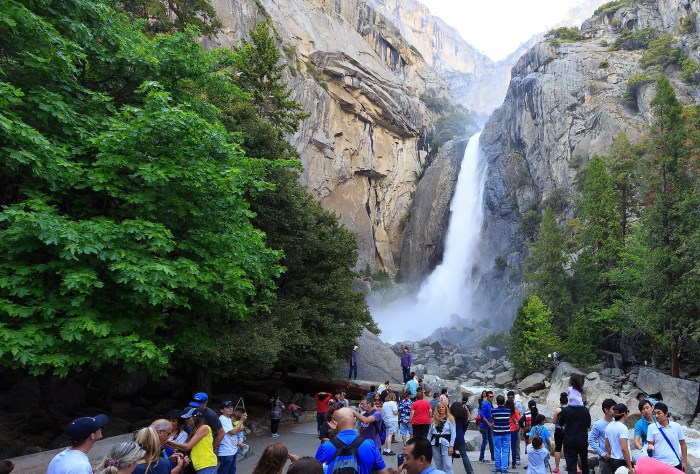
Source: worldatlas.com
Finding good hiking trails near me is key for outdoor enthusiasts. Beyond the usual good hiking trails, exploring the breathtaking scenery of pretty hiking trails near me adds another layer of appeal. Ultimately, the best hiking trails near me provide a rewarding experience, regardless of the scenic beauty.
Locating trailheads and navigating through them safely are crucial components of any successful hike. Accurate maps, coupled with reliable navigation tools, enhance the experience and minimize risks. Proper planning and awareness of the surrounding environment are paramount to a rewarding and safe journey.Effective trail navigation involves more than just knowing the route; it requires understanding the terrain, potential hazards, and the ability to adapt to changing conditions.
This crucial element is often overlooked, but its importance cannot be overstated. This section will detail the essential steps for finding trailheads, utilizing trail maps, employing navigation tools, and leveraging online mapping services.
Finding Trailheads
Knowing the precise location of trailheads is essential for any hike. Reliable directions and clear signage at the trailhead itself are crucial. Accurate directions and clear signage at the trailhead can be critical for safety. Using online maps and GPS devices, or consulting detailed trail guides, are effective strategies for obtaining these details. Trailhead information can be readily obtained through local parks and recreation departments, or from hiking websites and forums dedicated to local trails.
Local hiking groups can also provide valuable insight into trailhead locations.
Trail Maps
Comprehensive trail maps are indispensable tools for hikers. They provide a visual representation of the trail, including key landmarks, waypoints, and elevation profiles. This information aids in planning the hike, ensuring a smooth and enjoyable experience.
- Landmarks: Significant features like bridges, intersections, or prominent trees can serve as reference points. Understanding these landmarks helps in maintaining orientation and prevents getting lost. A well-defined trail map will prominently display these key landmarks.
- Waypoints: Specific points along the trail, such as intersections or significant changes in elevation, are often marked as waypoints. These points are invaluable for navigation and help hikers stay on course.
- Elevation Profiles: Visualizing the elevation gain and loss throughout the hike is critical for planning. This data is vital in assessing the physical demands of the trail and for choosing the right gear and level of preparedness.
Navigation Tools
Modern navigation tools greatly enhance the safety and enjoyment of hiking. A variety of tools are available, each with its strengths and limitations.
- GPS Devices: GPS devices provide precise location information and can guide hikers along the trail. They can be especially helpful in areas with limited cell service or poor visibility. GPS devices offer real-time location tracking and map overlays, making navigation seamless.
- Smartphone Apps: Numerous hiking apps for smartphones offer features similar to GPS devices, including maps, navigation, and tracking. These apps often integrate with other services, such as social media, to facilitate group hikes and share experiences.
Using Online Mapping Services
Online mapping services are powerful tools for finding hiking trails near you. They provide detailed information on trails, including elevation profiles, trail difficulty, and user reviews.
- Searching for Trails: Inputting search terms like “hiking trails near me” or “mountain trails in [region]” into these platforms will yield relevant results.
- Viewing Trail Details: Exploring detailed trail information, including difficulty levels, distances, and estimated times, enhances the planning process.
- Utilizing Interactive Maps: Interactive maps allow users to zoom in on specific areas, view elevation profiles, and explore the terrain. These features help in making informed decisions about which trail is suitable.
Summary of Online Mapping Services
A table summarizing the available online mapping services and their key features is presented below.
| Service | Key Features |
|---|---|
| Google Maps | Comprehensive mapping, real-time traffic, satellite imagery, route planning |
| OpenStreetMap | Free and open-source, detailed maps for many regions, customizable layers |
| Hiking Project | Specialized hiking platform, detailed trail descriptions, community-driven content |
| AllTrails | User-submitted trail reviews, detailed trail information, route planning |
Safety Considerations and Tips
Hiking, a popular outdoor activity, offers numerous benefits. However, it’s crucial to prioritize safety, especially when venturing onto trails. Understanding and applying safety precautions can significantly enhance the enjoyment and mitigate risks associated with hiking. Proper preparation and awareness of potential hazards are paramount for a safe and rewarding experience.Thorough planning and preparedness are essential components of safe hiking.
This includes being aware of the trail’s difficulty, the expected weather conditions, and the potential risks associated with the environment. A well-informed hiker is a safe hiker.
Weather Awareness and Preparedness
Accurately predicting and understanding weather patterns is vital. Unforeseen changes in weather conditions can pose significant risks. Consider checking the forecast before heading out and be prepared for sudden changes, such as rain, wind, or temperature drops. Knowing how to dress appropriately for varying conditions is equally important. Carrying layers of clothing allows for adjustments based on the changing climate.
Proper Gear and Clothing
Essential gear and appropriate clothing are crucial for comfort and safety, especially in challenging conditions. Selecting the right gear and clothing depends on the trail’s difficulty, expected weather, and the duration of the hike. This includes items like sturdy hiking boots, a backpack with sufficient capacity, a first-aid kit, a map and compass (or GPS device), and a fully charged phone.
Consider the specific needs of the trail and terrain when selecting equipment. A reliable compass, map, and GPS device or smartphone app can provide crucial guidance during navigation.
Navigating Challenging Terrain
Hiking trails often vary in difficulty, from gentle paths to steep inclines and rocky ascents. Assessing the terrain’s challenges and understanding the limitations of your abilities is paramount. Hiking with a partner can enhance safety. Carrying a communication device, such as a satellite phone or a personal locator beacon (PLB), can offer additional safety.
Potential Hazards and Mitigation
Several potential hazards can arise during hikes. Wildlife encounters, such as encountering bears or snakes, require careful consideration and preparedness. Familiarize yourself with the wildlife in the area and learn how to react to potential encounters. Trail closures or unexpected roadblocks require alternative routes or a plan B.
Safety Tips
“Safety is paramount in hiking; be prepared for anything.”
- Check the weather forecast and dress in layers.
- Inform someone of your hiking plans, including route, expected return time, and emergency contact information.
- Carry a fully charged cell phone and a portable charger.
- Carry sufficient water and snacks for the duration of your hike.
- Wear sturdy hiking boots and appropriate clothing for the conditions.
- Bring a first-aid kit with essential supplies.
- Be aware of wildlife in the area and know how to react to encounters.
- Carry a map and compass (or GPS device) and know how to use them.
- Tell someone your hiking route and expected return time.
- Be mindful of trail closures and potential hazards.
Environmental Impact and Conservation
Hiking, a popular recreational activity, offers significant benefits for physical and mental well-being. However, its impact on the environment necessitates a mindful approach to responsible practices. Unsustainable hiking habits can lead to detrimental consequences for ecosystems, highlighting the crucial role of hikers in conservation efforts.Responsible hiking practices are essential for preserving the natural beauty and ecological integrity of hiking trails and surrounding areas.
These practices not only minimize the negative effects of human activity but also enhance the overall experience for all who enjoy the outdoors.
Significance of Responsible Hiking Practices
Hiking’s impact on the environment is substantial, ranging from habitat disruption to pollution. Responsible hiking practices, emphasizing minimal impact, are crucial for mitigating these effects. By adhering to these principles, hikers actively contribute to the long-term health and sustainability of natural landscapes.
Impact of Hiking on the Environment and Mitigation Strategies
Hiking activities can have several environmental consequences. Trail erosion, habitat disturbance, and litter are all potential problems that result from unsustainable practices. Proper planning and adherence to Leave No Trace principles can drastically minimize these impacts. For instance, choosing well-maintained trails and avoiding fragile ecosystems can significantly reduce the risk of damaging sensitive environments. Likewise, proper waste disposal and minimizing disturbance to wildlife are critical for preserving the natural beauty of hiking trails.
Exploring good hiking trails near you is a rewarding way to connect with nature. Understanding the nuances of hiking, as defined in the Hiking Definition , helps you appreciate the various types of trails and choose the best one for your fitness level. Finding those perfect local hiking spots that align with your desired experience will further enhance your enjoyment of the outdoors.
Importance of Leaving No Trace Principles, Good hiking trails near me
The Leave No Trace principles provide a comprehensive framework for responsible outdoor recreation. These principles emphasize minimizing impact on the environment while maximizing the enjoyment of the outdoors. Adhering to these principles promotes sustainable practices and ensures the preservation of natural resources for future generations. Examples include packing out all trash, staying on marked trails, and avoiding disturbing wildlife.
Role of Hikers in Protecting Natural Resources
Hikers play a critical role in protecting natural resources by actively minimizing their environmental impact. Their conscious decisions and responsible actions contribute significantly to the preservation of biodiversity and ecological balance. Through mindful choices, hikers can actively participate in conservation efforts and ensure the continued enjoyment of nature for all.
Environmentally Friendly Hiking Practices
- Proper Waste Disposal: Carrying out all trash, including food scraps, is essential. Using designated waste receptacles and properly disposing of waste are crucial to preventing pollution and maintaining the natural beauty of the trail. Leaving the environment as you found it is paramount to minimizing the impact of your hike.
- Staying on Marked Trails: Staying on established trails prevents soil erosion and damage to vegetation. It also helps maintain the integrity of the natural landscape and preserves wildlife habitats. Deviating from marked trails can cause damage to fragile ecosystems and disrupt the natural flow of the environment.
- Minimizing Campfire Impacts: When campfires are allowed, use existing fire rings, properly extinguish the fire, and avoid disturbing the surrounding vegetation. This practice ensures that fire is used responsibly and that the surrounding environment is not impacted negatively. Respecting the environment around you is crucial for minimizing the impact of your hike.
- Respecting Wildlife: Observing wildlife from a distance and avoiding feeding or disturbing animals is vital. Disturbing animals can disrupt their natural behaviors and impact their well-being. Respecting the wildlife is essential for ensuring their safety and well-being.
- Water Conservation: Minimizing water usage during the hike and using water sources responsibly helps preserve water resources in the area. Being mindful of water resources helps ensure the availability of clean water for all.
Epilogue: Good Hiking Trails Near Me
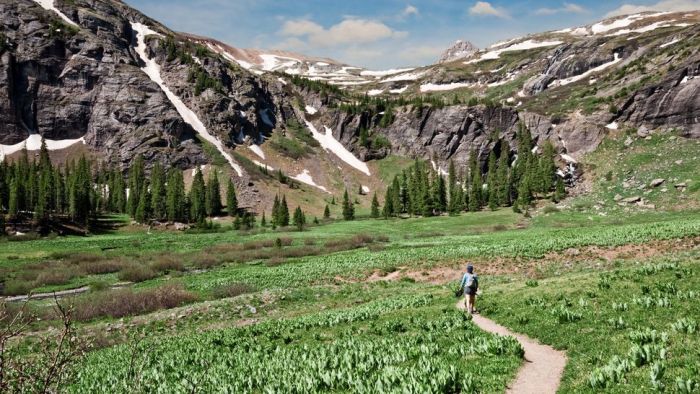
Source: futurecdn.net
In conclusion, finding the ideal hiking trails near you is easier than ever. This guide has provided a wealth of information, from detailed trail descriptions and reviews to safety tips and environmental considerations. With the resources provided, you can confidently plan your next outdoor adventure and enjoy the beauty of nature while respecting its delicate balance. Happy hiking!
Popular Questions
What are the best trails for families with young children?
Look for trails with gentle slopes, short distances, and ample shade. Consider trails with designated play areas or picnic spots. Check trail reviews for family-friendly feedback.
How can I prepare for a challenging hike?
Thorough preparation is key. Research the trail’s difficulty, elevation gain, and terrain. Pack appropriate clothing and gear, including sturdy shoes, plenty of water, snacks, and a first-aid kit. Acclimatize to the elevation if necessary.
What are some safety tips for wildlife encounters?
Maintain a safe distance from wildlife. Make noise while hiking to avoid surprising animals. Store food properly to prevent attracting unwanted attention. Learn about common local wildlife and their behaviors.
What are some environmentally friendly hiking practices?
Pack out everything you pack in. Stay on marked trails to avoid damaging vegetation. Minimize your impact on the environment. Respect wildlife and their habitats.

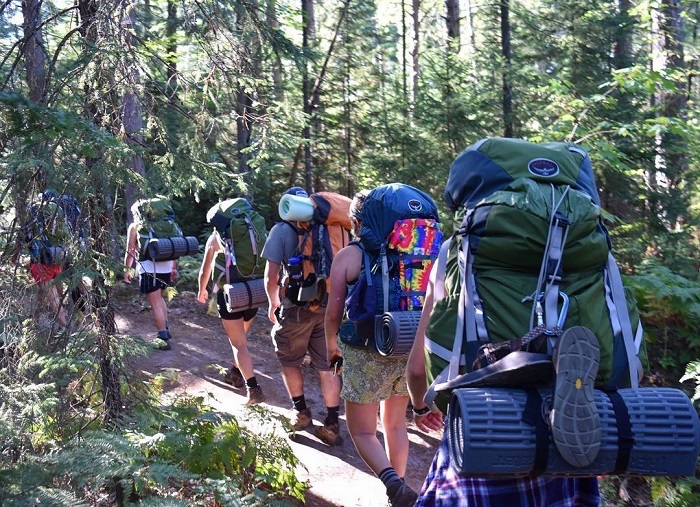


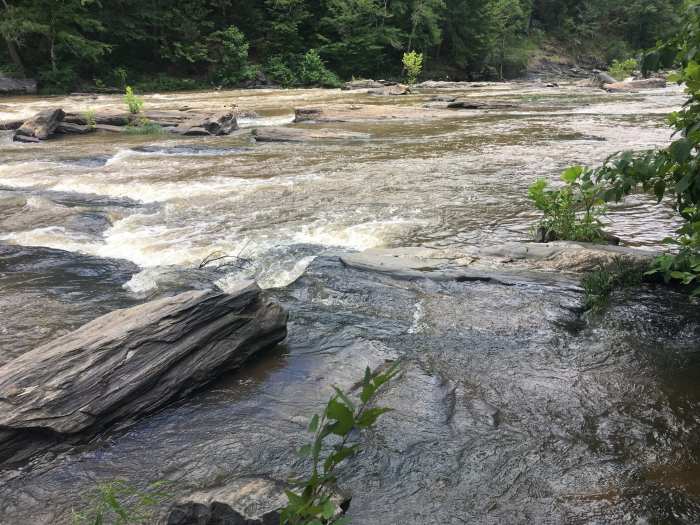
Leave a Reply